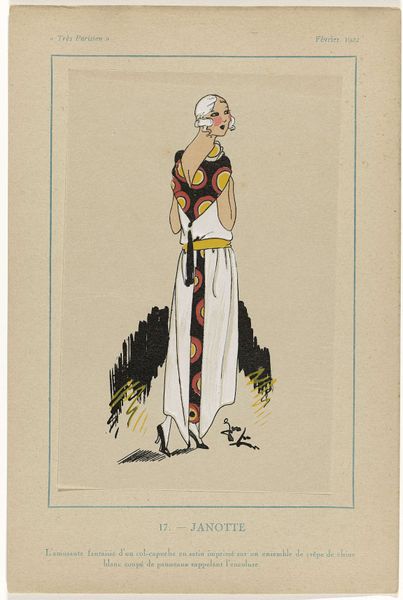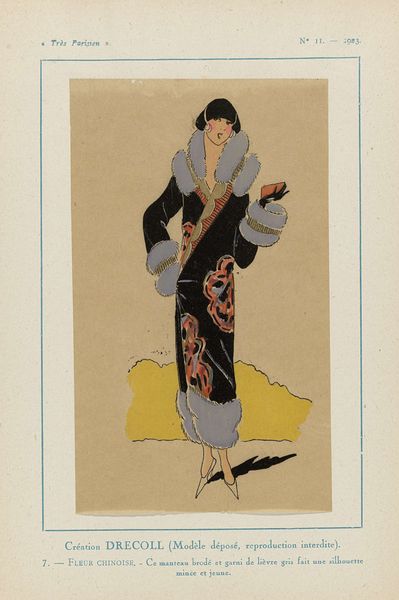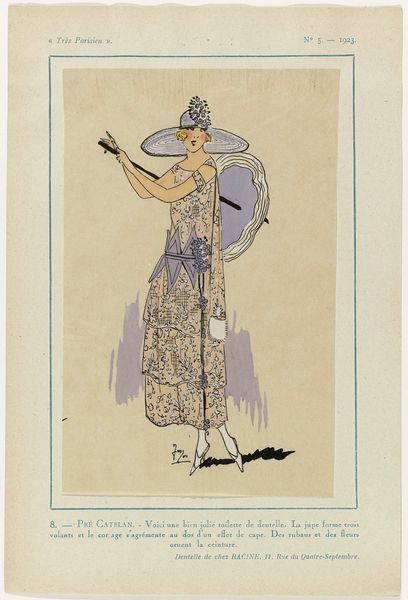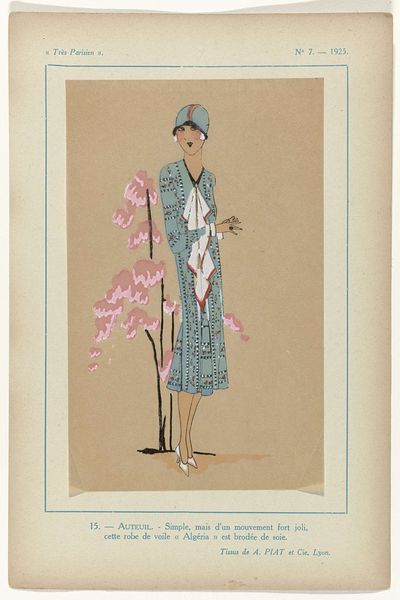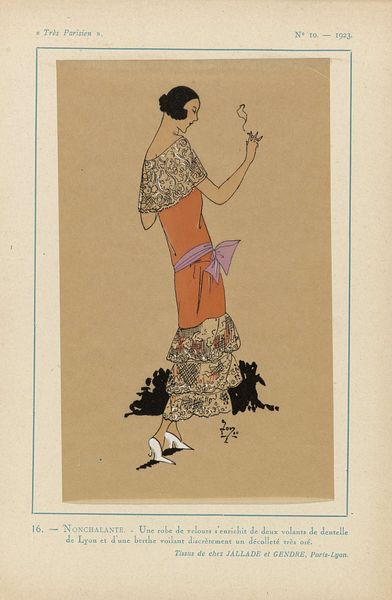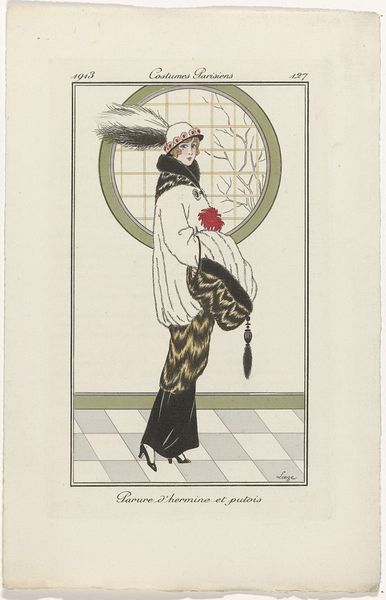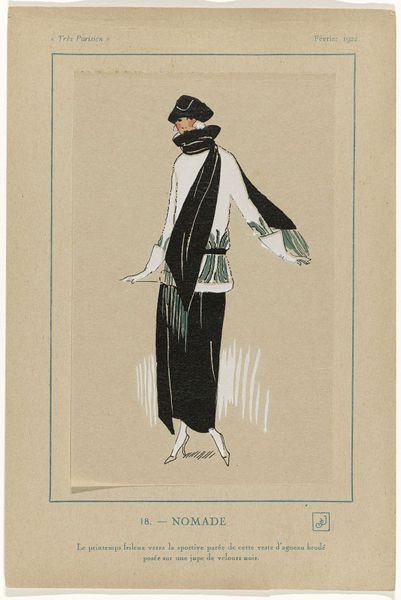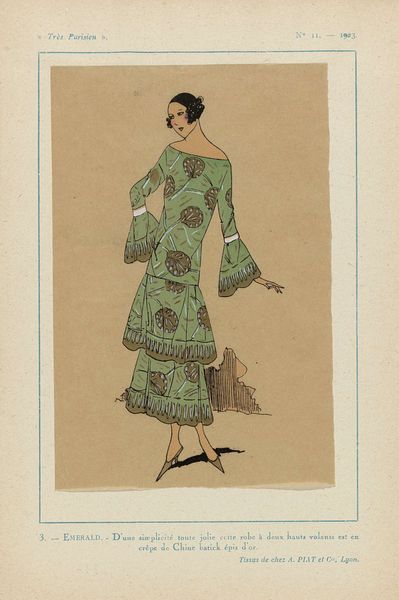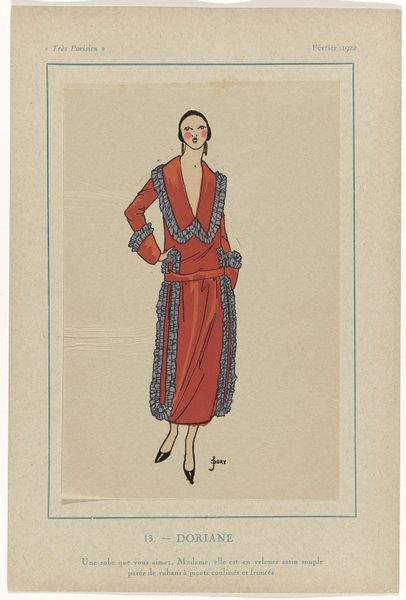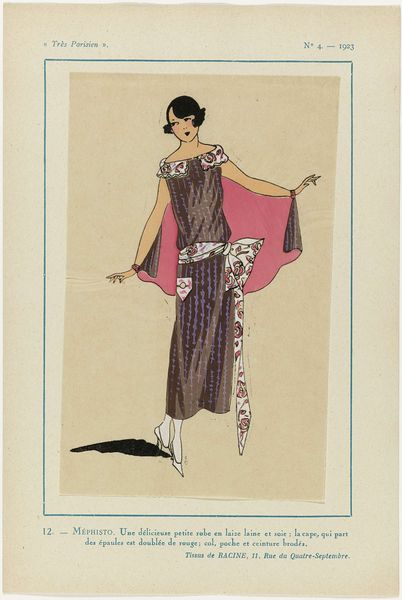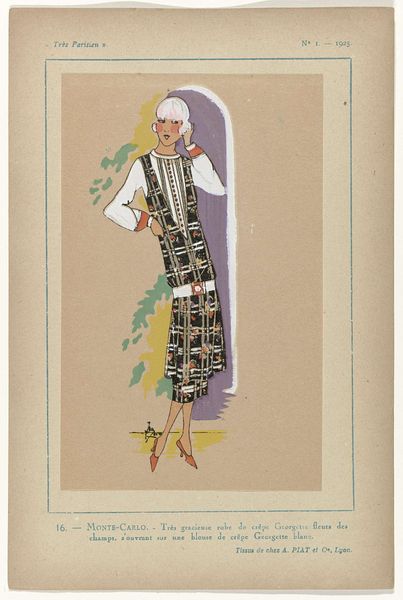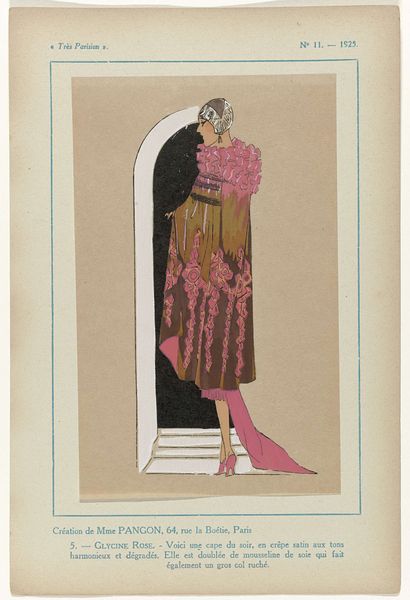
drawing, watercolor
#
portrait
#
art-deco
#
drawing
#
watercolor
#
historical fashion
#
watercolour illustration
Dimensions: height 195 mm, width 120 mm
Copyright: Rijks Museum: Open Domain
Editor: So this is “Très Parisien, 1925, No. 11, Pl. 15 - DIABOLIQUE”, a watercolor and drawing by G-P. Joumard. I find the cloak’s pattern captivating. What strikes you when you look at this image? Curator: It's interesting to consider the materials implied here. It isn't simply about the aesthetics, but how this image speaks to the labor and production of fashion in 1920s Paris. The text mentions lamé – a fabric with metallic threads – and "Tissus de chez SCHULZ et Cie, Lyon et Paris.” This situates the work firmly within a commercial context. Are we looking at an illustration of ‘high art,’ or a commercial textile sample promoting consumption? Editor: I see what you mean! It's an advertisement. Curator: Exactly! It highlights the means of production; the actual creation of that shimmering lamé. Notice how the rendering of the fringe hints at the textile processes of weaving and embellishment. How does that material context shift your understanding of the "Diabolique" title, though? Editor: I guess "diabolique" doesn’t just refer to a sense of dark allure or a woman who is being playful, but is suggestive of the skill involved in working with metallic thread – like alchemy or something a bit magical. It hints at transformation – perhaps the transformative power of couture itself? Curator: Precisely! And how access to that material transforms you in the social landscape! The text accompanying the drawing suggests the material "suits" to envelop the person that wears it "with all the science." The print invites the viewer to consider the consumption, and the effects and materials related to fashion. So, even this elegant image is bound up in questions of labor, industrial processes, and material culture. Editor: Wow, that completely changes how I see it. Now I understand how much the materials and who made them contribute to the narrative of the artwork. Curator: It's all about tracing those connections, right?
Comments
No comments
Be the first to comment and join the conversation on the ultimate creative platform.
